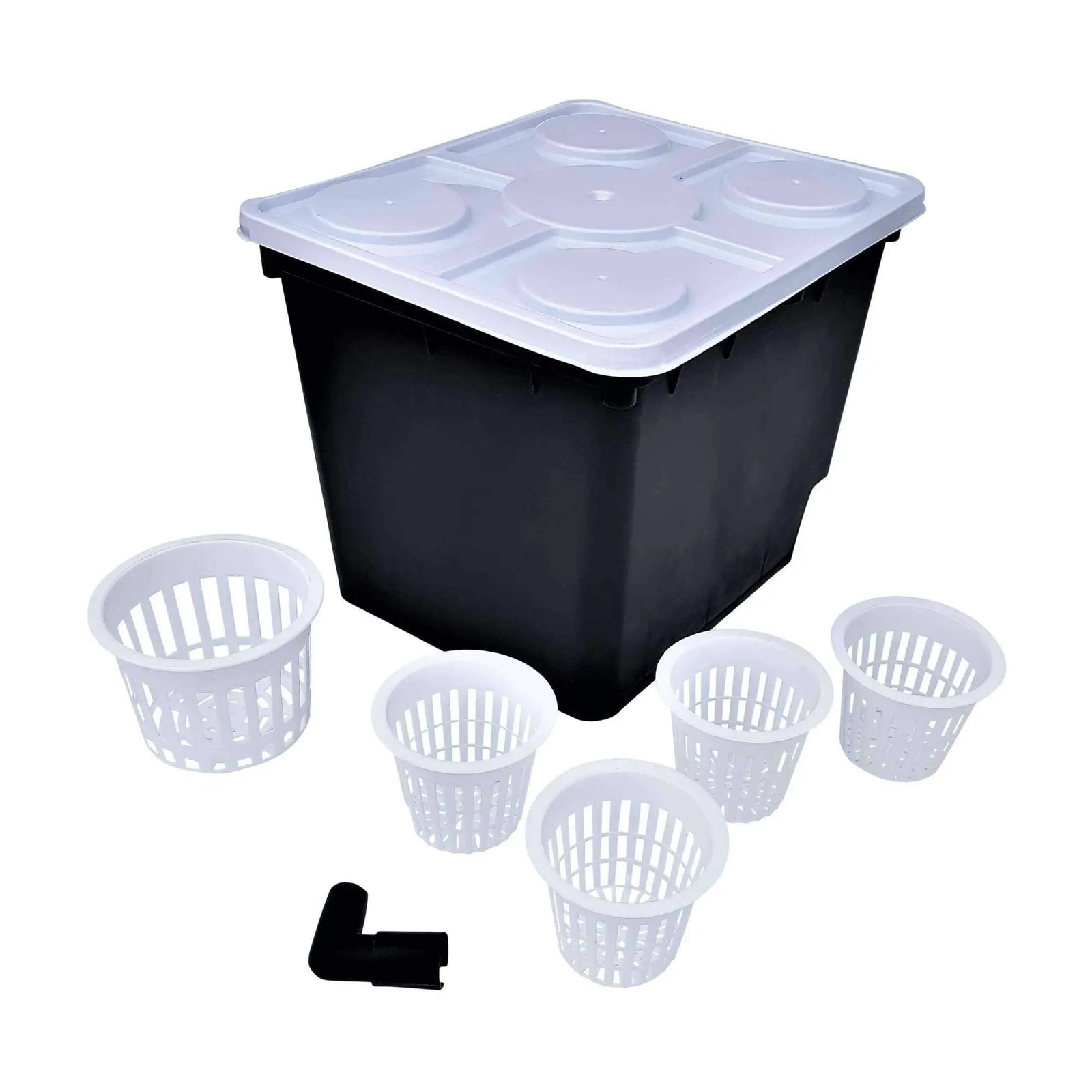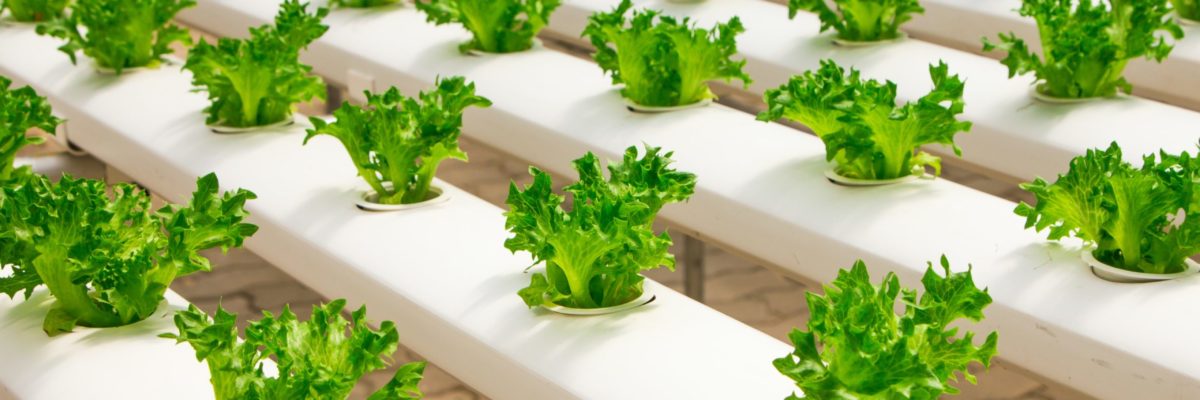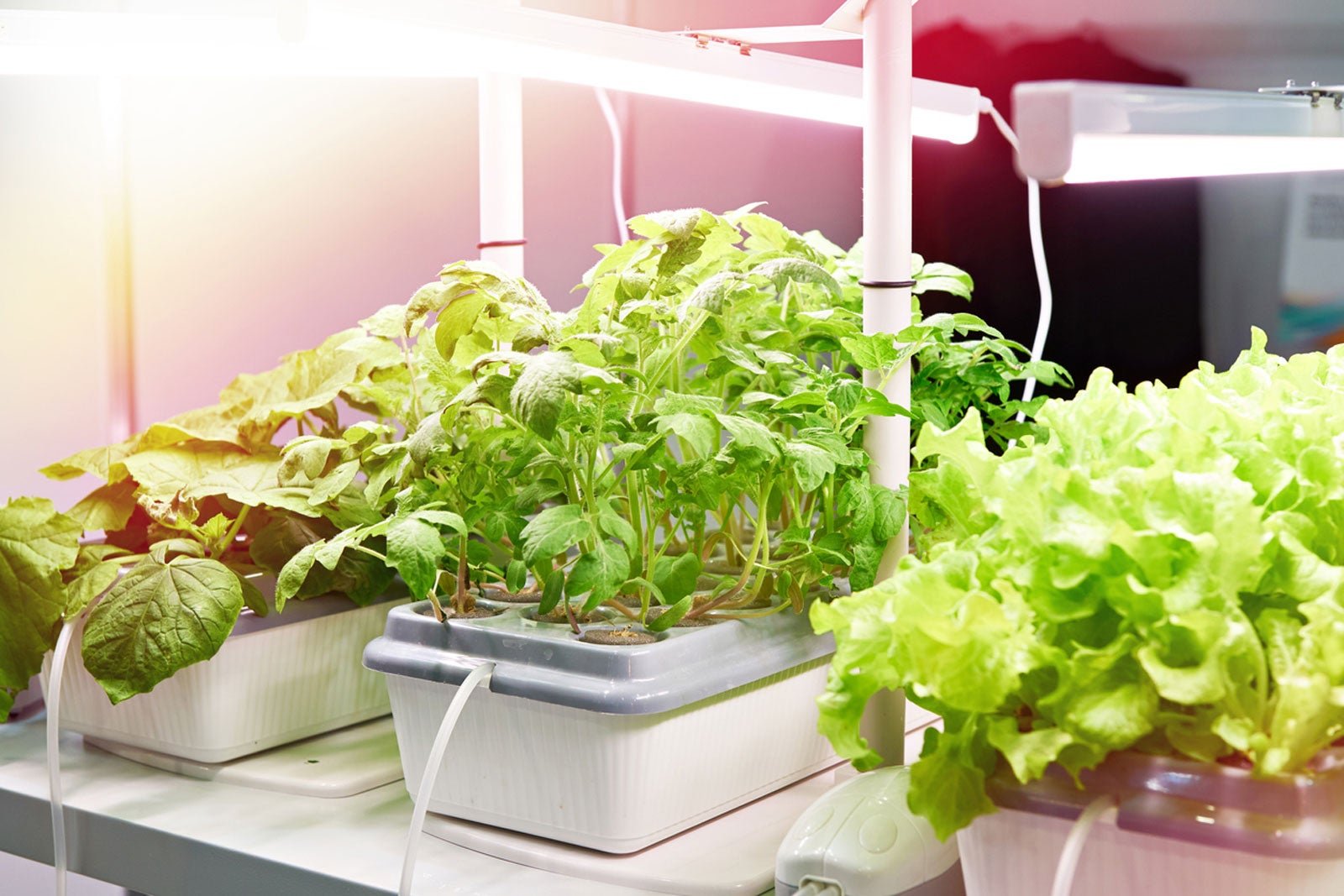Hydroponics is changing how we grow plants. It lets you grow without soil.
This method uses water, nutrients, and light to nurture plants. With hydroponics, you can grow herbs, vegetables, and flowers all year round. Hydroponic gardening offers many advantages for plant lovers. It saves space and water, making it ideal for small areas.
This system allows for faster plant growth and higher yields. You control the environment, so plants get the right amount of light and nutrients. Hydroponics reduces pests and diseases, which means fewer chemicals. Whether you’re a beginner or an expert, understanding the right equipment is key. From grow lights to nutrient solutions, each piece plays a role. This blog will guide you through the essential tools needed for a successful hydroponic setup. Dive in and discover how to start your own garden.
Introduction To Hydroponics
Hydroponics is changing the way we grow plants. It’s a method where plants grow without soil. Instead, they use a nutrient-rich water solution. This type of gardening is becoming popular. It offers unique benefits and uses advanced equipment.
What Is Hydroponics?
Hydroponics is a method of growing plants in water. The water is mixed with essential nutrients. This allows plants to absorb what they need directly. No soil is involved. Different systems exist for hydroponic gardening. Some use containers filled with water. Others use special materials to support plant roots. Every system aims to nourish plants efficiently.
Benefits Of Soil-less Gardening
Hydroponics offers several advantages over traditional gardening. One key benefit is faster plant growth. Plants get nutrients directly, speeding up growth. It also uses less water. In fact, it can save up to 90% of water. This makes it environmentally friendly. Another benefit is space efficiency. Hydroponics can be done indoors or in small areas. This makes it ideal for urban settings. Lastly, plants grown this way often have fewer pests. This reduces the need for pesticides.

Credit: www.bootstrapfarmer.com
Essential Equipment
Hydroponics is a modern method of growing plants without soil. Essential equipment plays a crucial role in successful hydroponic systems. Each component ensures plants get the right nutrients and conditions to thrive.
Grow Lights
Grow lights are vital for indoor hydroponic gardens. Plants need light to perform photosynthesis. Without sunlight, grow lights simulate natural light. There are different types of grow lights. LED lights are energy-efficient and last longer. Fluorescent lights are cheaper, but less efficient. Choose lights based on plant type and growth stage.
Water Pumps
Water pumps circulate nutrient solutions to plant roots. They ensure plants receive essential nutrients and oxygen. Pumps come in various sizes. Choose one that matches your system’s capacity. Submersible pumps are popular for small systems. External pumps suit larger setups. Regular maintenance keeps pumps running smoothly.
Types Of Hydroponic Systems
Hydroponics offers a way to grow plants without soil. Different systems cater to various needs and plant types. Understanding these systems helps in choosing the right one for your garden. Each system has its own benefits and challenges.
Nutrient Film Technique
The Nutrient Film Technique (NFT) uses a shallow stream of water. This water contains all the nutrients needed by the plants. It flows over the roots in a thin film. The roots absorb the nutrients as the water flows by. This method reduces water usage. NFT systems work well for small plants like lettuce and herbs. They do not support large plants well. Careful monitoring prevents clogging and ensures nutrient supply.
Deep Water Culture
Deep Water Culture (DWC) suspends plant roots in nutrient-rich water. An air pump oxygenates the water to keep roots healthy. This method allows for rapid growth. Plants get constant access to nutrients and oxygen. DWC systems are simple and effective. They are great for beginners. Large plants like tomatoes benefit from DWC. Regular checks on water levels and pH maintain plant health.
Nutrient Solutions
Hydroponics is an exciting way to grow plants without soil. The secret? Nutrient solutions. These solutions provide the essential elements plants need. They are crucial for healthy growth and development. A well-prepared nutrient solution can be the difference between thriving plants and poor yields.
Importance Of Nutrients
Nutrients are the building blocks for plant health. They ensure strong roots and vibrant leaves. Plants absorb these nutrients directly from the water. This process makes nutrient solutions vital in hydroponics.
Macro-nutrients include nitrogen, phosphorus, and potassium. These are essential for growth, flowering, and fruiting. Micro-nutrients, like iron and zinc, support overall plant health. Each nutrient plays a specific role in plant development.
Mixing Your Solution
Mixing your nutrient solution requires precision. Start with clean water. Add nutrients according to the plant’s needs. Use a measuring tool for accuracy.
Check the pH level of your solution. Most plants prefer a pH between 5.5 and 6.5. Adjust the pH as needed. A correct pH ensures nutrient absorption.
Test the electrical conductivity (EC) of your solution. It measures the nutrient concentration. A balanced EC promotes healthy plant growth. Regular testing helps maintain the right nutrient levels.
Monitoring And Control
Monitoring and control are vital in hydroponics. They ensure optimal plant growth. Precise monitoring helps maintain perfect conditions for plants. Control systems adjust the environment when needed. Understanding these systems can lead to better yields and healthier plants.
Ph And Ec Meters
pH and EC meters measure essential water properties. pH meters determine the acidity or alkalinity of the nutrient solution. Maintaining the correct pH level is crucial for nutrient absorption. EC meters measure electrical conductivity. This indicates the nutrient concentration in the water. Regular checks with these meters ensure plants receive the right nutrients.
Automated Systems
Automated systems simplify the monitoring process. They use sensors to gather real-time data. This data helps in adjusting light, temperature, and humidity. Automated systems can also adjust nutrient delivery. They ensure plants receive consistent care. These systems reduce manual effort and improve efficiency. Investing in automation can make hydroponic gardening easier.

Credit: www.agrowtronics.com
Choosing The Right Setup
Choosing the right setup for your hydroponics equipment can be a game-changer in your gardening journey. It’s not just about picking any system; it’s about finding one that fits your unique needs. Whether you’re transforming a small corner of your apartment or dedicating a whole room, getting the right setup can mean the difference between thriving plants and constant frustration.
Space Considerations
Your available space plays a crucial role in determining your hydroponics setup. Are you working with a compact apartment balcony or a spacious backyard? Size matters, but so does the shape and accessibility of the area. If you’ve ever tried squeezing a large system into a tiny room, you’ll know the headache it brings.
Measure your space accurately. Consider vertical options if you’re tight on floor space, like tower systems. These setups maximize growth while using less ground area. Think about accessibility too. Can you easily reach all parts of your system for maintenance?
Budget Planning
Budgeting is essential when choosing hydroponics equipment. A common mistake is overspending on high-tech systems without considering long-term costs. You don’t need the most expensive setup to grow healthy plants. Instead, focus on what you can afford while planning for ongoing expenses like nutrients and electricity.
Make a detailed budget list. Include initial setup costs, monthly maintenance, and potential upgrades. Can you balance quality and affordability? Sometimes, a simple system with fewer bells and whistles can be more effective than a costly complex one.
How much are you willing to invest in your garden’s future? By planning your budget wisely, you can make your dream of a flourishing hydroponics garden a reality.
Remember, the right setup isn’t just about equipment—it’s about creating a sustainable environment for your plants and lifestyle. What setup will help you achieve your gardening goals?
Common Challenges
Hydroponics is a fascinating way to grow plants without soil, using water enriched with nutrients. Yet, like any method, it comes with its own set of challenges. Whether you’re a beginner or a seasoned grower, tackling these obstacles head-on can make your hydroponics journey more rewarding. Let’s dive into some of the common hurdles you might face and how to overcome them.
Pest Management
Even in a controlled environment like hydroponics, pests can find their way in. Imagine spending weeks nurturing your plants only to see them fall victim to pesky intruders. It’s a frustrating scenario many growers face.
To combat this, maintain cleanliness and regularly check your plants. Use natural pest control options, like neem oil or insecticidal soap, which are gentle yet effective. Remember, prevention is better than cure. Creating a routine check can save you from bigger headaches down the line.
Have you ever noticed how a single overlooked pest can quickly become a colony? Catching them early is crucial. Have you considered setting sticky traps or using beneficial insects like ladybugs? They can be your allies in keeping pest problems in check.
Algae Growth
Algae growth is another common challenge in hydroponics. That green film on your nutrient solution? It’s not just unsightly but can rob essential nutrients from your plants. You might have come across it and felt overwhelmed, but there’s a solution.
Cover your nutrient reservoirs to block light, as algae thrive in lit conditions. Regularly change the water and clean the system to prevent build-up. Simple actions like these can dramatically reduce algae growth.
Sometimes, algae can sneak into hard-to-reach areas. Have you tried using an opaque tank? It limits light exposure and keeps algae at bay. As you work, remember that small tweaks in your setup can lead to big improvements.
Have you faced these challenges? How did you manage them? Share your experiences below. Every tip counts, and your insights could be the key to helping someone else succeed in their hydroponics venture.
Future Of Home Hydroponics
Future home hydroponics promises accessible gardening with innovative equipment. Compact systems fit small spaces, making fresh produce available to all. Simplified tools ensure easy setup and maintenance, encouraging more people to grow their own food.
The future of home hydroponics is bright and promising. As more people discover the benefits of growing plants without soil, the demand for efficient hydroponics systems is skyrocketing. Imagine having a lush garden in your living room, providing fresh produce year-round, regardless of the season. This is not just a dream but a reality, thanks to technological advancements and a growing focus on sustainability.Technological Innovations
Recent technological innovations have transformed home hydroponics into a user-friendly experience. Automated systems now allow you to monitor and adjust nutrient levels, lighting, and water cycles through your smartphone. LED lights have improved significantly, offering customizable spectrums that mimic natural sunlight, boosting plant growth. These innovations save time and make home gardening accessible for everyone, even if you have zero gardening experience. Imagine setting up a system that waters your plants while you relax or sleep—it’s like having a personal gardener that never takes a day off.Sustainability Impact
Home hydroponics is not just about convenience; it also impacts sustainability positively. Hydroponics uses less water than traditional gardening, conserving one of our most precious resources. It reduces the need for pesticides and chemical fertilizers, leading to healthier produce for you and the environment. As urban spaces become denser, hydroponics offers a practical solution to grow food locally, reducing transportation emissions. Have you ever thought about your carbon footprint? Hydroponics might be your answer to living more sustainably, one fresh herb at a time. — As you explore hydroponics equipment, remember that it’s not just about growing plants—it’s about embracing a future that harmonizes technology with nature. Could this be the next big thing in your home? The possibilities are endless, and the future is ripe for exploration.
Credit: www.advancednutrients.com
Frequently Asked Questions
What Equipment Is Needed For Hydroponics?
Essential equipment for hydroponics includes grow lights, a water pump, nutrient solution, growing medium, and pH testers. Use a reservoir to hold the nutrient solution. Ensure proper air circulation with fans. Net pots and grow trays support plant growth. Maintain temperature with heaters or coolers as needed.
What Are The 5 Disadvantages Of Hydroponics?
Hydroponics has high initial setup costs. It requires constant monitoring and expertise. Power outages can disrupt growth. Plants may be susceptible to waterborne diseases. Limited plant variety options exist.
What Is The Most Profitable Plant To Grow Hydroponically?
Basil is the most profitable plant to grow hydroponically. It grows quickly and yields a high market demand. Hydroponic systems enhance its growth, ensuring a consistent and abundant harvest. Basil’s popularity in culinary uses increases its profitability, making it an ideal choice for hydroponic farming.
What Are The Three Types Of Hydroponic Systems?
The three types of hydroponic systems are nutrient film technique (NFT), deep water culture (DWC), and drip systems. NFT circulates nutrient-rich water over plant roots. DWC submerges roots in nutrient solutions. Drip systems deliver nutrients directly to plant roots. Each method optimizes growth without soil.
Conclusion
Hydroponics equipment is essential for successful indoor gardening. It allows for precise control of nutrients, water, and light. This method offers efficient space usage and faster plant growth. Choosing the right tools improves crop quality and yield. From pumps to grow lights, each component plays a role.
Proper maintenance ensures long-lasting performance. Beginners can start small and expand with experience. Hydroponics opens new possibilities for urban farming. With the right setup, anyone can grow fresh produce at home. Explore the options, and enjoy the benefits of a thriving hydroponic garden.





